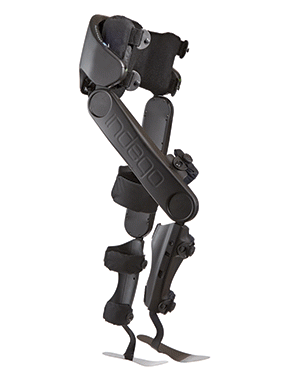One of the less significant ways tech will change workers’ comp is prostheses. Alluded to in the introductory post to this occasional series, there are myriad issues that will affect workers’ comp due to new “high mobility” prostheses (my term).
Parker Hannifan is just one of the companies working on your claimant’s next prostheses; there model is the Indego. Currently in clinical trials at Shepherd, Rusk, Chicago Institute of Rehab among other elite rehab facilities, Indego has developed an exoskeleton that enables paraplegics to walk.
photo Craig Hospital
The Indego weighs a mere 26 pounds, has a battery pack that lasts 4 hours and can be readily switched out. According to the website “The user controls his movement by leaning forward to walk forward and returning to an upright position to stop walking. To sit, the user leans backward, and Indego dampens its motors until the user is safely seated.”
A related field is neuroprosthetics – small, powered devices that connect to the brain to simulate or stimulate sensory organs or muscles. Visual, auditory, and muscular control are three areas with a wealth of research.
One area with deep significance for comp involves orthoses for traumatic brain injury patients to control limb movement by reading neurons in the brain, calculating limb trajectory, and signaling the muscles and nerves needed to create movement.
These devices are likely going to be very costly, require ongoing expert maintenance and support, and likely replacement over time.
They will also enable paraplegics to walk, brain-damaged individuals to lead a more normal life, and some day, blinded people to see.
As medical care improves to the point that grievously injured patients actually survive trauma that would have killed them just a decade ago, there will be more and more candidates for these devices in future years.
What does this mean for you?
Very good news indeed for patients formerly consigned to a life of many limits; moral, ethical, and financial dilemmas and decisions for employers, regulators, and insurers.




The goal should be to get an injured worker as closely back to pre-injury status. It looks like technology and the medical community are striving to help us get to that goal. How exciting! Now, if we can just get companies set up with safety programs to help reduce the occurrence of injuries that lead to loss of limbs…